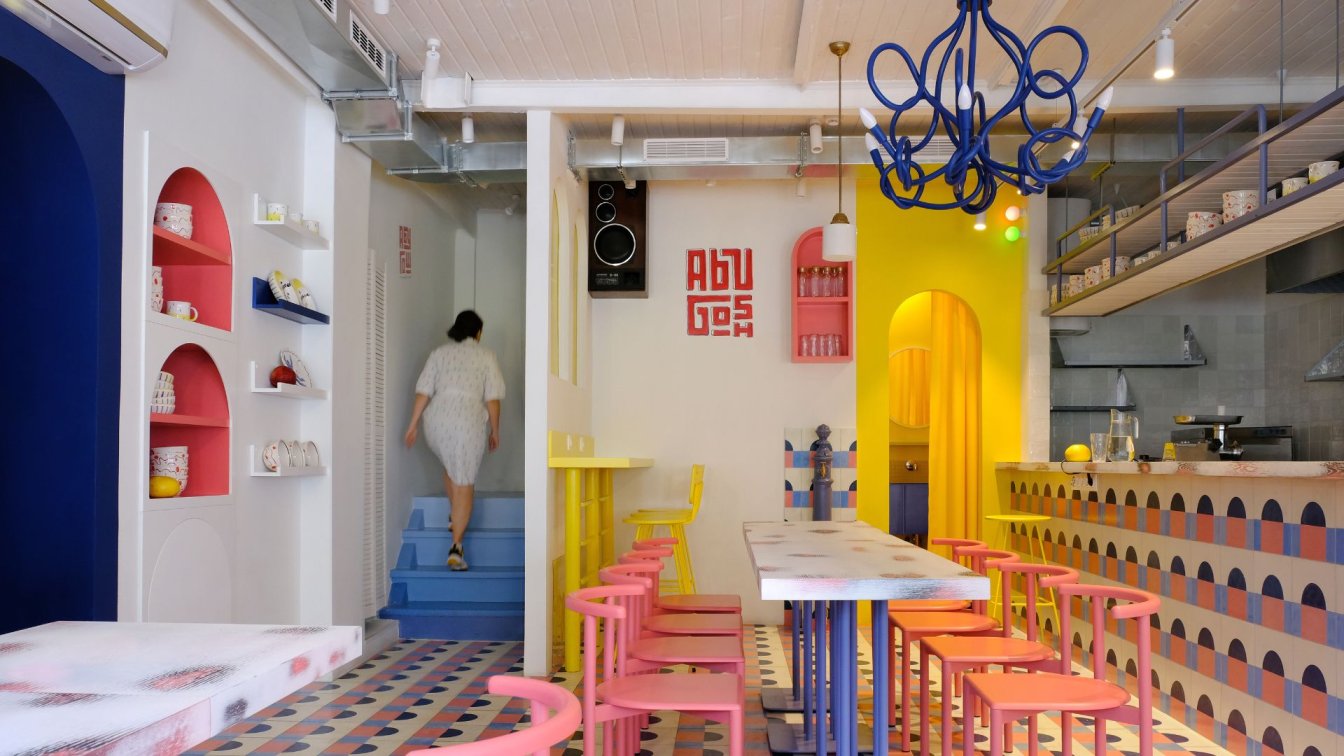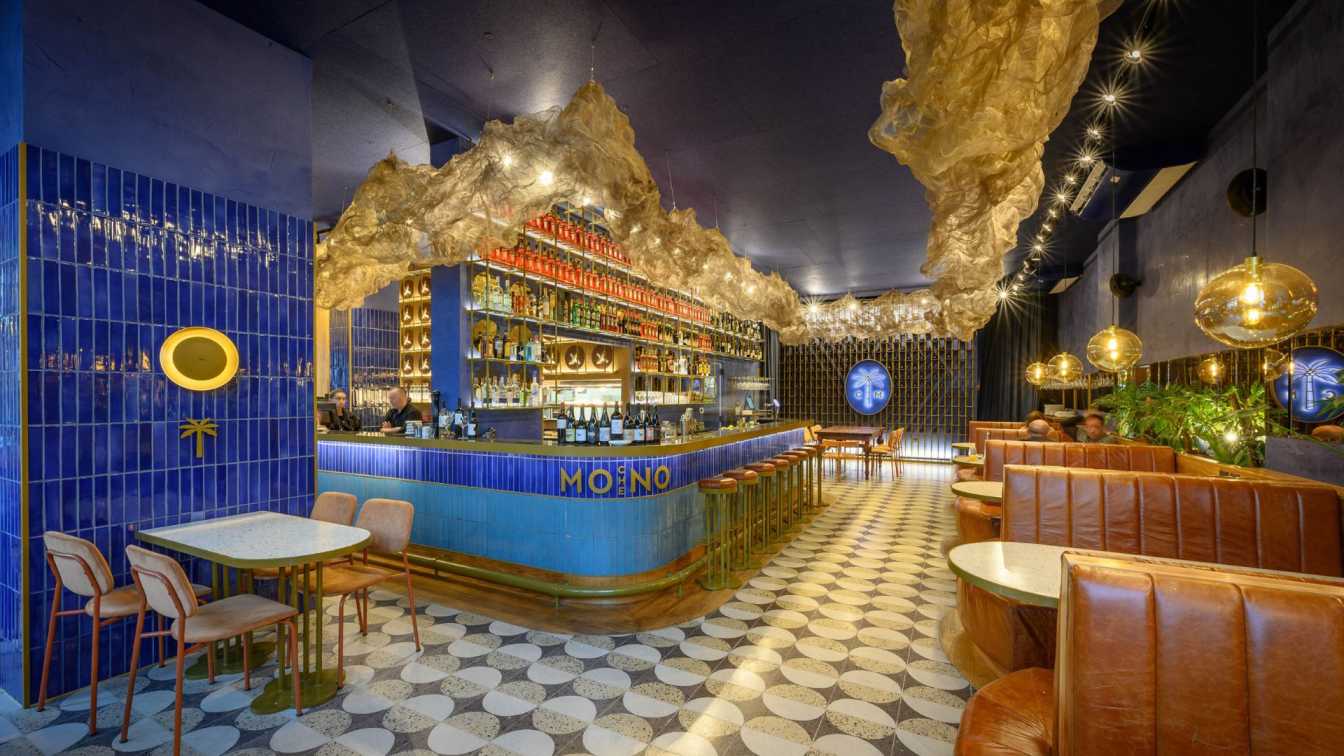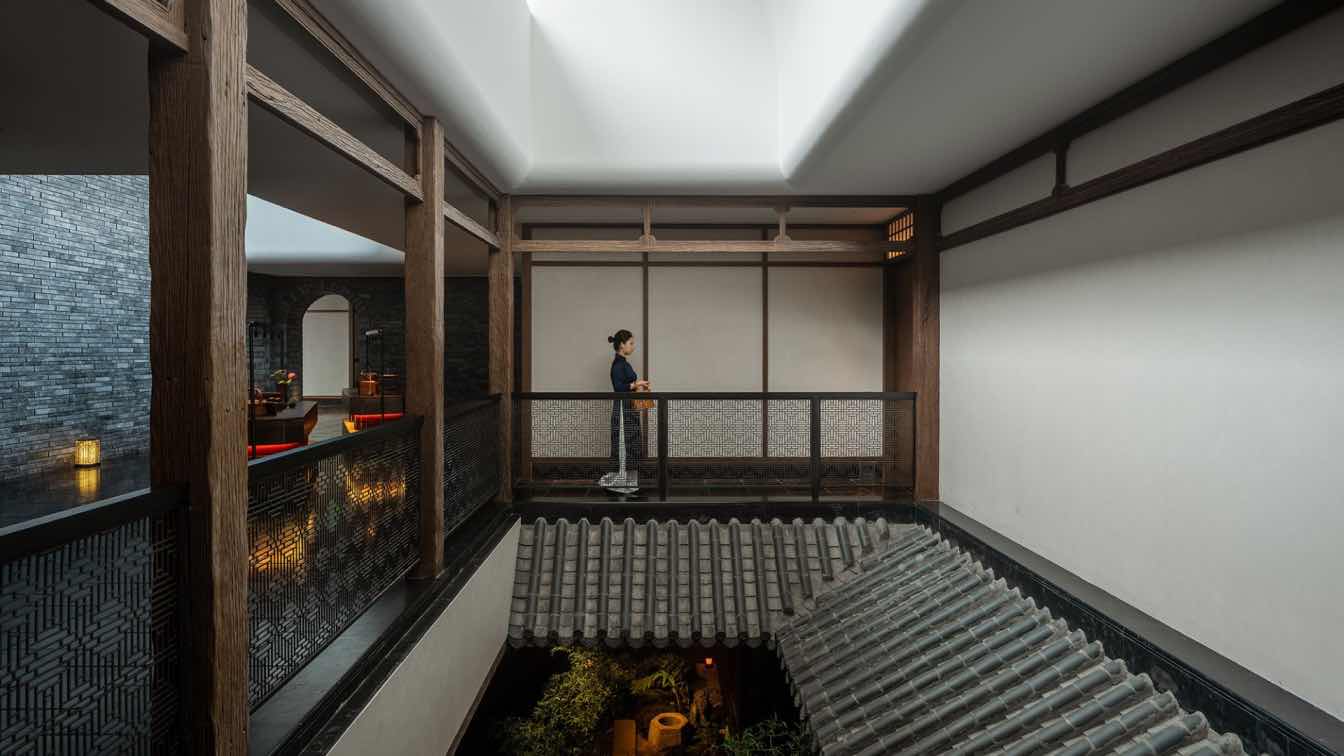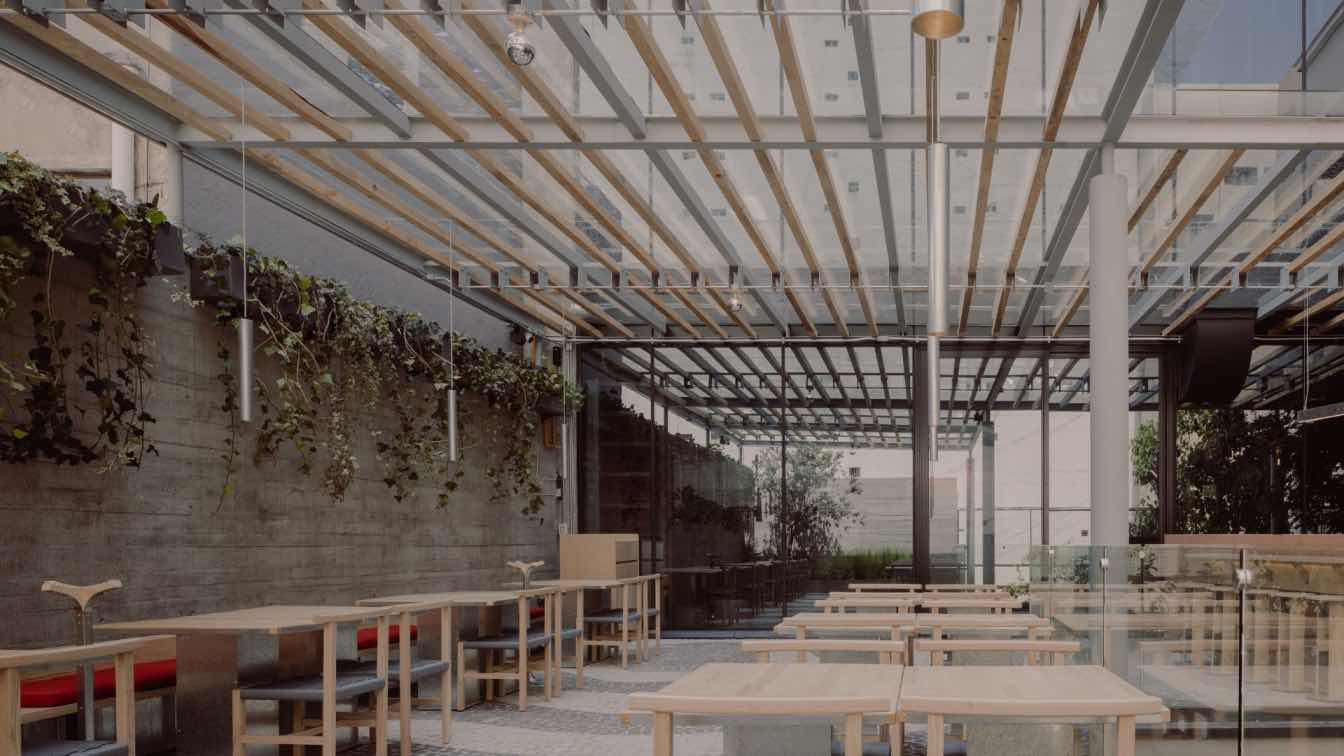This is the newly opened hall of a well-known traditional Ukrainian restaurant – a favorite among tourists visiting the Ukrainian Carpathians. “Grybova Hata” in Ukrainian means a home of mushrooms.
Designers reimagined the concept of traditional Ukrainian hospitality, building a new narrative around mushrooms – the restaurant’s signature ingredient. The refreshed aesthetic centers on a minimalist space defined by organic curves, a natural color palette, and raw, eco-friendly materials.
The entire interior is crafted from just two materials: textured plaster and locally sourced travertine, quarried near Ternopil. Mushrooms served as both inspiration and medium – most of the furniture was produced in Ukraine, further grounding the project in local craftsmanship.
Sustainability played a key role in the design. Light fixtures double as handwashing stations, with bodies made from recycled plastic by designer Valerii Kuznetsov.
The mushroom theme – reflected in the restaurant’s name – appears throughout both the menu and the interior. The hostess stand is adorned with chaga mushrooms, which naturally grow on tree trunks in the wild.

One of the most striking custom features is a set of unique curtains made from mushroom-based biotextile. Designer Dasha Tsapenko created six curtain pieces in the form of outerwear and sheepskin coats, plus one rectangular panel. These were woven from coconut and hemp fibers, then inoculated with polypore mushroom spores and placed in optimal growing conditions. After three weeks, the spores sprouted and formed an uneven layer of mycelium. Each curtain is one of a kind – some areas are densely grown, while others reveal the underlying netting, a result of the material’s living nature, which resists full control or predictability.
The dining area is organized around three “islands,” each highlighting a local culinary tradition: cheese – featuring the iconic cheese horses; meat – centered on shovdary, traditional smoked pork legs; and spirits – showcasing distillates made from regional herbs and botanicals.
“This architecture organically grew within the existing restaurant space – just as a mushroom grows from its mycelium. It embodies the ideas of locality and organic development, rethinking traditional materials and celebrating the culinary heritage of the region,” says Volodymyr Nepyyvoda, Managing Partner at YOD Group.
































































